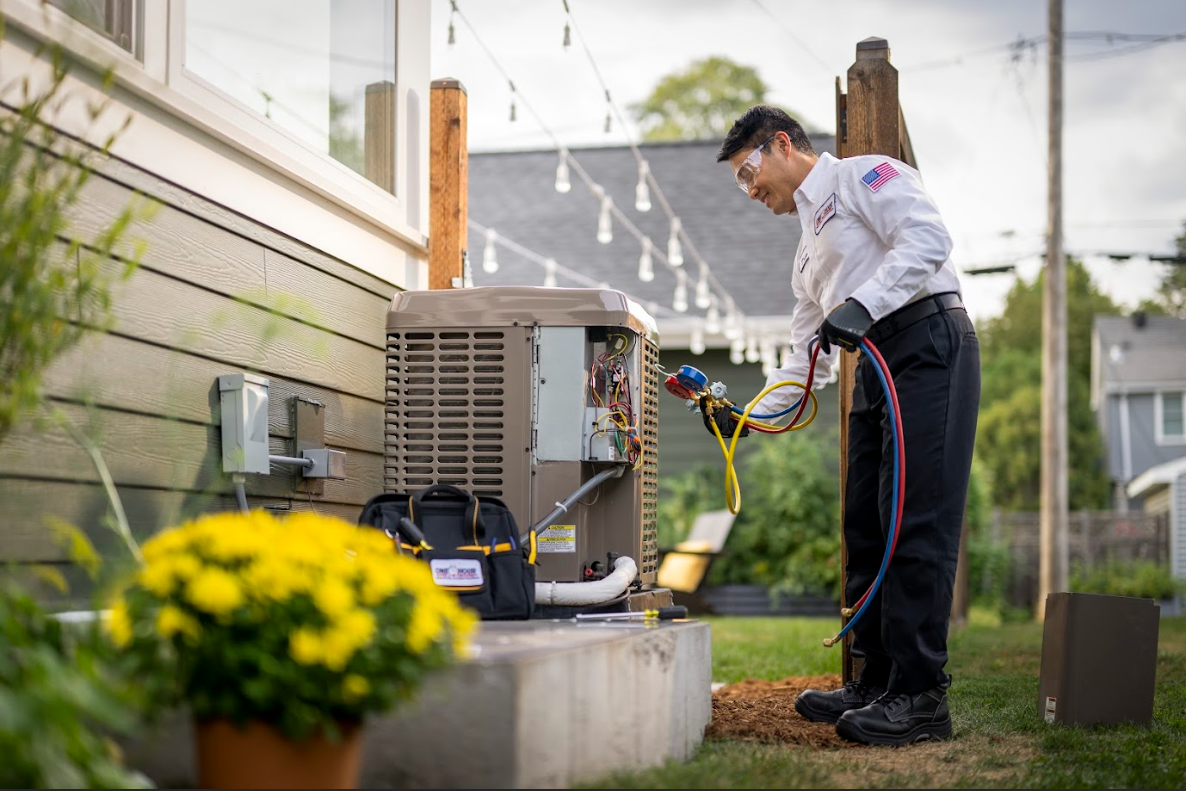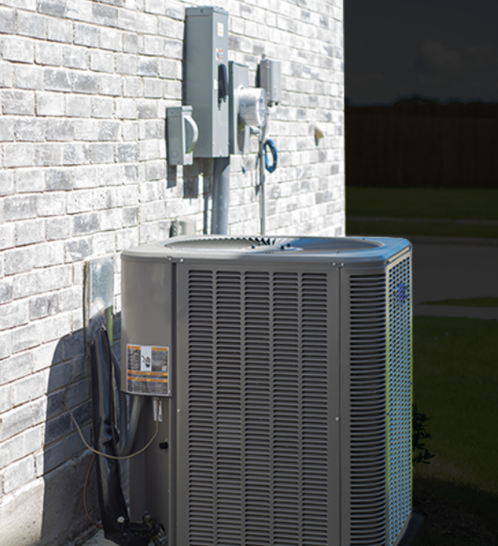
What is the most common problem of a furnace?
Most furnace breakdowns trace back to one simple issue: restricted airflow. In Ogden’s dry, dusty winters, clogged filters and blocked returns are the top reasons a system short-cycles, runs loud, or stops heating consistently. Airflow problems stress every part of the furnace. They cause overheating, premature limit switch trips, and higher gas and power use. Fix airflow first, and many “mystery” symptoms disappear.
This matters in Ogden, UT, because winter arrives fast and hits hard. A furnace that struggles on a mild October night often fails on a single-digit January morning in East Central, Washington Terrace, or North Ogden. Homeowners who understand airflow can prevent most breakdowns and keep repair costs under control.
How airflow problems show up in real homes
A typical service call in Ogden goes like this: the furnace fires, runs for a minute or two, then shuts down. After a short pause, it tries again. That short-cycling loop often points to a dirty filter or a blocked return grill. The heat exchanger gets too hot, the limit switch opens, and the board kills the burners to protect the system.
Another frequent pattern: rooms feel uneven. The main level in https://www.onehourheatandair.com/ogden a Bonneville Hills rambler runs warm, while the basement stays cool. The culprit is often a starved blower struggling against a clogged filter or closed supply registers. Homeowners sometimes close vents in little-used rooms to “push heat” elsewhere. That increases static pressure and makes airflow worse.
Some calls begin with a burning smell and a loud start-up. Dust baked on the heat exchanger after a long summer break is normal for the first cycle, but if the smell lingers, it may be a choked intake filter cooking every run. That same restriction makes the blower work harder, which can wear bearings and shorten motor life.
Why airflow drives most furnace problems
Modern gas furnaces depend on a set airflow rate to move heat off the exchanger. If air cannot pass through the filter and coil freely, temperatures rise fast. The high-limit switch opens to protect the exchanger, then resets once things cool. Repeat that cycle all week, and components age fast. Igniters crack from thermal stress. Flame sensors foul quicker. Control boards see more heat and current spikes.
In Ogden, dust load is higher than many expect, especially in homes near construction or along Harrison Boulevard where traffic kicks up fine particulates. Add pet hair and dryer lint, and a one-inch filter can clog in four to eight weeks during peak use. Homes with finished basements and undersized return ducts also face chronic static pressure issues.

Other common causes behind “no heat”
Airflow sits at the top, but three other issues come up often on furnace repair calls in Ogden:
- Dirty flame sensor: A thin layer of oxidation stops the sensor from proving flame, so the board shuts the gas valve. Cleaning takes minutes and prevents nuisance shutdowns.
- Faulty igniter: Hot-surface igniters grow brittle. Many fail between five and eight years. A new igniter restores reliable starts and protects the gas valve.
- Thermostat or low-voltage wiring faults: Loose connections at the furnace or an aging thermostat cause intermittent calls for heat. In older homes in Ogden’s East Bench area, brittle wire insulation is a frequent find.
These issues often appear after prolonged short-cycling caused by poor airflow, so treating the root problem prevents repeat visits.
Quick homeowner checks before calling for service
A few safe checks can save time and sometimes solve the issue immediately. Do these with the power switch on the side of the furnace left on unless a step asks otherwise, and never open gas lines or sealed combustion areas.
- Check the filter: If it looks gray or matted, replace it. Use the correct size printed on the frame. Match the airflow arrow with the furnace direction.
- Verify supply and return airflow: Open all supply registers at least halfway. Make sure return grilles are not blocked by furniture or rugs.
- Confirm the thermostat is set to Heat: Replace batteries if the screen is dim. Try setting the temperature 3 to 5 degrees above room temp.
- Inspect the furnace switch and breaker: The switch can look like a light switch. Reset the breaker once if it is tripped.
- Look at the intake and exhaust: For high-efficiency furnaces with PVC pipes, clear snow, leaves, or mesh screens at the termination outside.
If the furnace still short-cycles or fails to start, schedule furnace repair in Ogden. Repeated resets increase wear and can hide a safety fault.
Filter choices that work in Ogden
Filter selection affects airflow and indoor air quality. In older Ogden bungalows and split-levels with tighter ductwork, a high-MERV one-inch filter can overload the blower. A practical target is MERV 8 to 11 for most homes, replaced every 1 to 3 months depending on pets and dust. Homes with allergy concerns do better with a media cabinet and a 4- or 5-inch filter, which supports higher MERV without choking airflow. If unsure, a quick static pressure test during a tune-up gives a real answer.
Anecdote from field work: a South Ogden homeowner switched from a MERV 8 one-inch to a MERV 13 one-inch after a big-box store promotion. Within two weeks, the furnace tripped the limit switch daily. Swapping to a 4-inch MERV 13 media filter solved it immediately because the thicker filter spread resistance over a larger surface.
Why annual service pays off on the Wasatch Front
A clean, measured furnace runs longer and safer. During a One Hour Heating & Air Conditioning tune-up in Ogden, a technician measures static pressure, temperature rise, and combustion. Those numbers show whether airflow and gas settings sit inside the furnace’s rating plate. The tech also cleans the flame sensor, checks the igniter’s resistance, inspects the inducer and blower, and verifies the drain on high-efficiency models. Small corrections here prevent midwinter outages.
Local conditions matter. Snowdrifts on North Ogden cul-de-sacs block terminations. Hard water leaves scale in condensate traps. Construction dust from new builds in West Haven loads filters quickly. The team adjusts the maintenance plan to match those realities.

When to repair and when to replace
Judgment comes down to age, safety, and cost. If a 10-year-old furnace needs a flame sensor and filter change, repair is sensible. If a 20-year-old unit in Ogden’s colder zones has a cracked heat exchanger or repeated limit trips, replacement is usually safer and cheaper over the next two winters. Energy savings from a properly sized, sealed, and commissioned furnace often offset financing costs, especially with gas rates and long heating seasons.
A rough rule used in the field: if the repair is more than one-third of the cost of a new furnace and the system is past 12 to 15 years, consider replacement. Any suspected heat exchanger failure is a safety call; shut it down and book an inspection immediately.
How One Hour approaches furnace repair in Ogden, UT
Service starts with airflow. The tech checks the filter, measures static pressure, and confirms the temperature rise matches the data plate. From there, the test path follows the symptoms:
- No heat or intermittent heat: verify thermostat signal, safety switch states, inducer operation, pressure switch, ignition, and flame rectification.
- Short-cycling or overheating: inspect filter, blower wheel cleanliness, coil blockage on combo systems, duct restrictions, and high-limit operation.
- Odd smells or loud operation: look for motor bearings, belt alignment on older units, gas leak checks at fittings, and blocked vents.
Homeowners get clear options in plain language, with pricing before work starts. Parts on trucks cover the most common failures in the Ogden market: hot-surface igniters, flame sensors, universal inducer motors, capacitors, and common control boards.
What homeowners in Ogden can do each season
Clean airflow and basic checks prevent most calls. Here’s a simple seasonal routine that fits local weather:
- Early fall: replace the filter, open all vents, and vacuum return grilles. Cycle Heat mode once and listen for smooth start-up.
- Midwinter: recheck the filter after heavy inversions or wind events. Clear snow and ice from outdoor terminations.
- Early spring: if connected to central AC, plan a coil and blower inspection so dust does not accumulate during the changeover.
These small steps keep the furnace inside its design range and protect the exchanger and electronics.
Ready for furnace repair in Ogden?
If the furnace short-cycles, shows a code for flame failure, or struggles to keep up on cold nights, it is time for a professional. One Hour Heating & Air Conditioning handles furnace repair Ogden calls daily across North Ogden, South Ogden, Washington Terrace, and nearby Weber County neighborhoods. The team solves airflow first, then addresses sensors, igniters, and controls with parts that fit the system. For fast, local help—whether for routine service or urgent furnace repair Ogden UT—reach out today and get the heat steady again before the next cold front.
One Hour Heating & Air Conditioning provides trusted furnace repair in Ogden, UT and full-service HVAC solutions for homes and businesses. Family-owned and operated by Matt and Sarah McFarland, our company is built on honesty, hard work, and quality service—values passed down from Matt’s experience on McFarland Family Farms, known across Utah for its sweet corn. As part of a national network founded in 2002, we bring reliable heating and cooling care backed by professional training and local dedication.
Our licensed technicians handle furnace and AC installation, repair, and maintenance, heat pumps, ductless mini-splits, thermostat upgrades, air purification, indoor air quality testing, humidifiers, dehumidifiers, duct cleaning, zoning systems, and energy-efficient replacements. We stand by a 100% satisfaction guarantee through the UWIN® program and provide honest recommendations to help Ogden homeowners stay comfortable year-round.
Call today for dependable service that combines national standards with a personal, local touch.
One Hour Heating & Air Conditioning
1501 W 2650 S #103 Phone: (801) 405-9435 Website: https://www.onehourheatandair.com/ogden
Ogden,
UT
84401,
USA